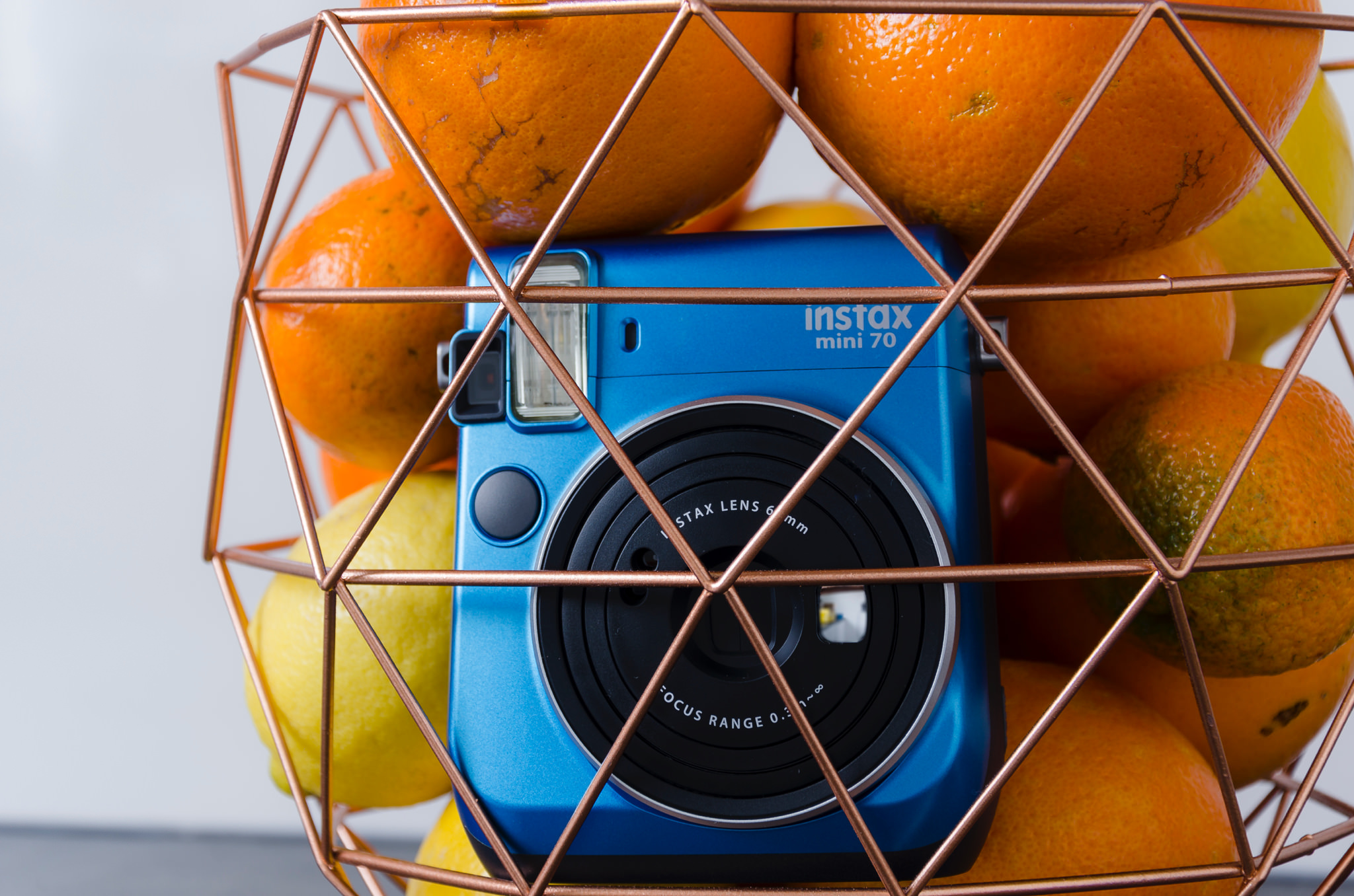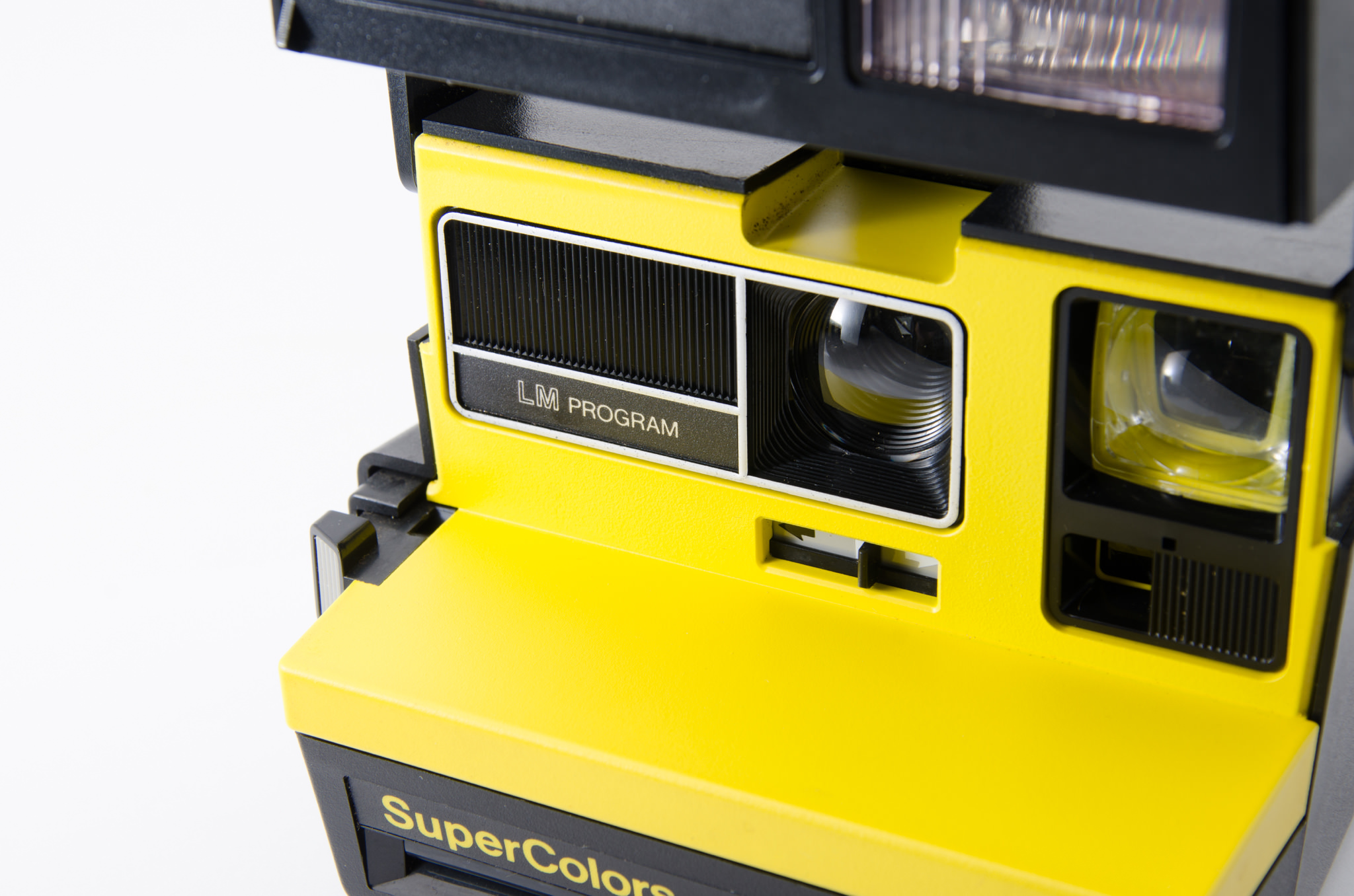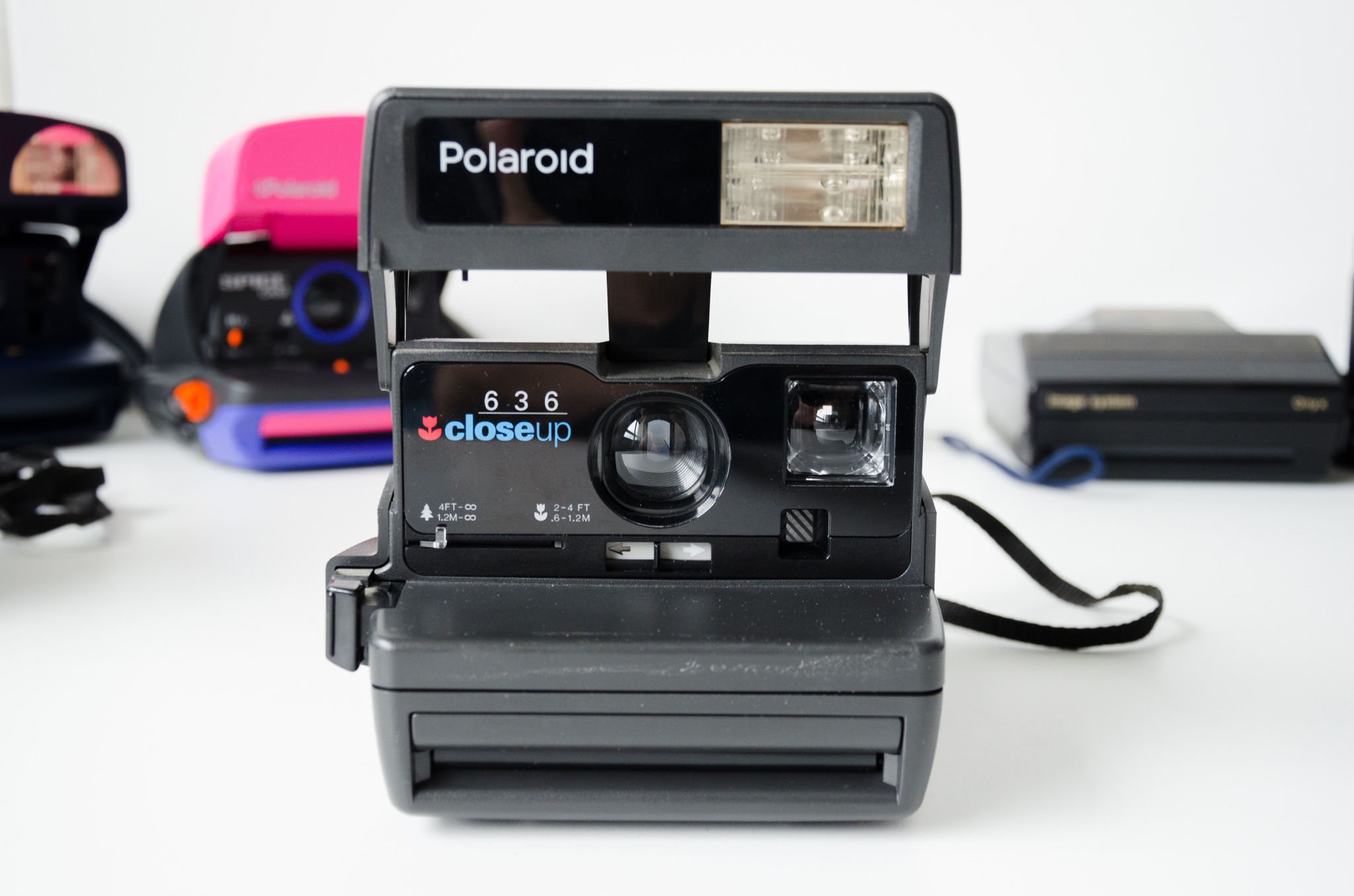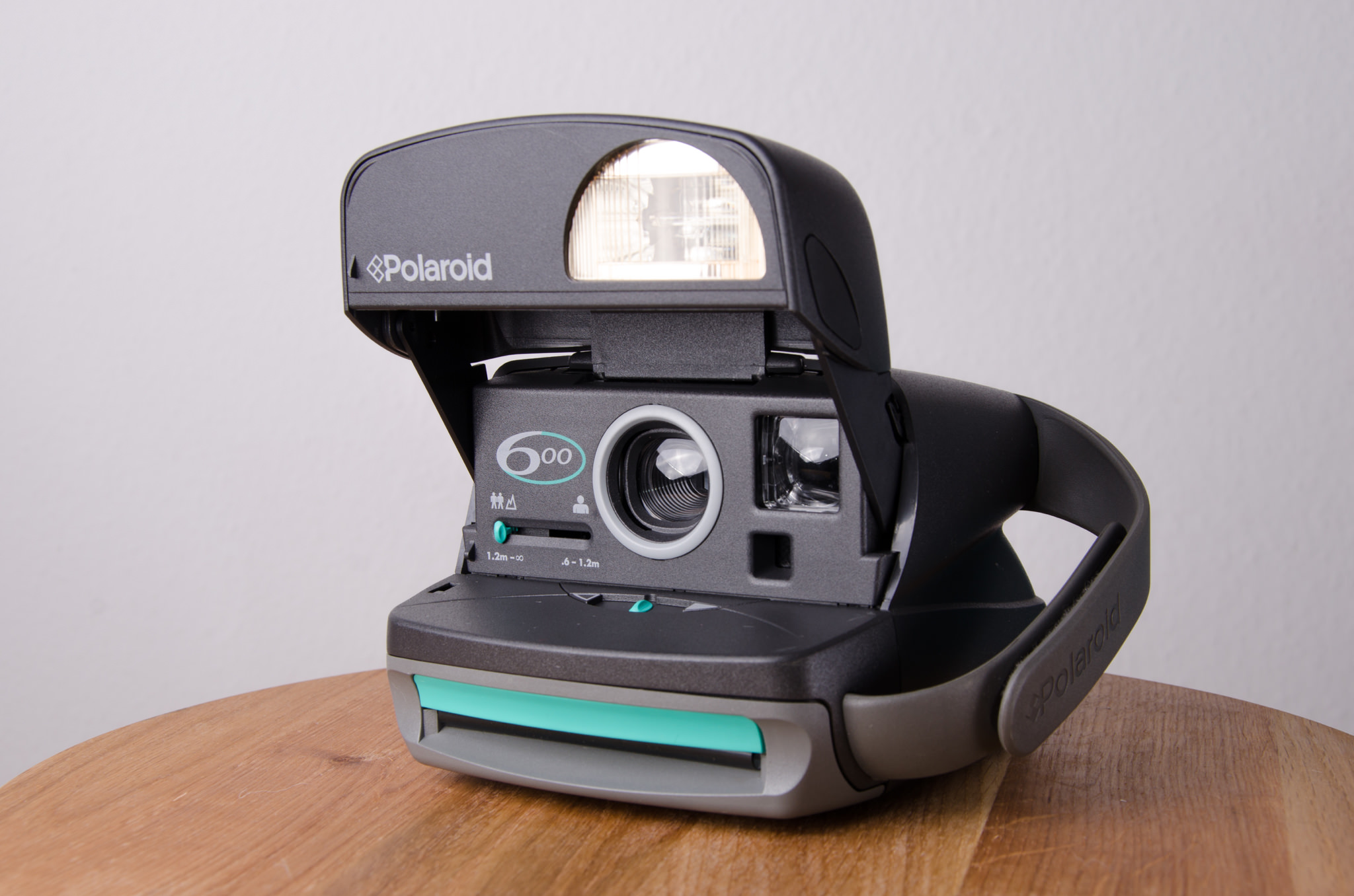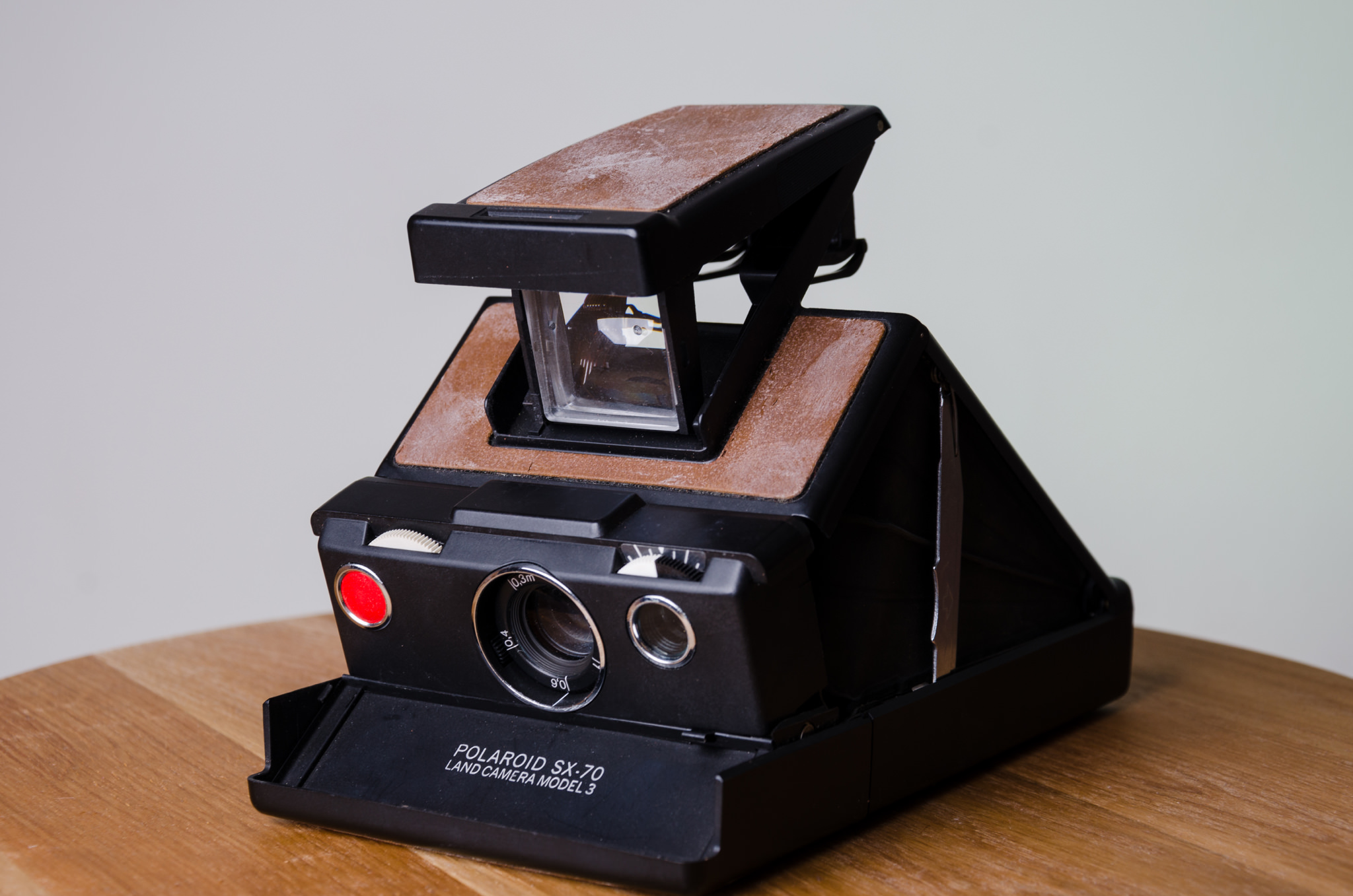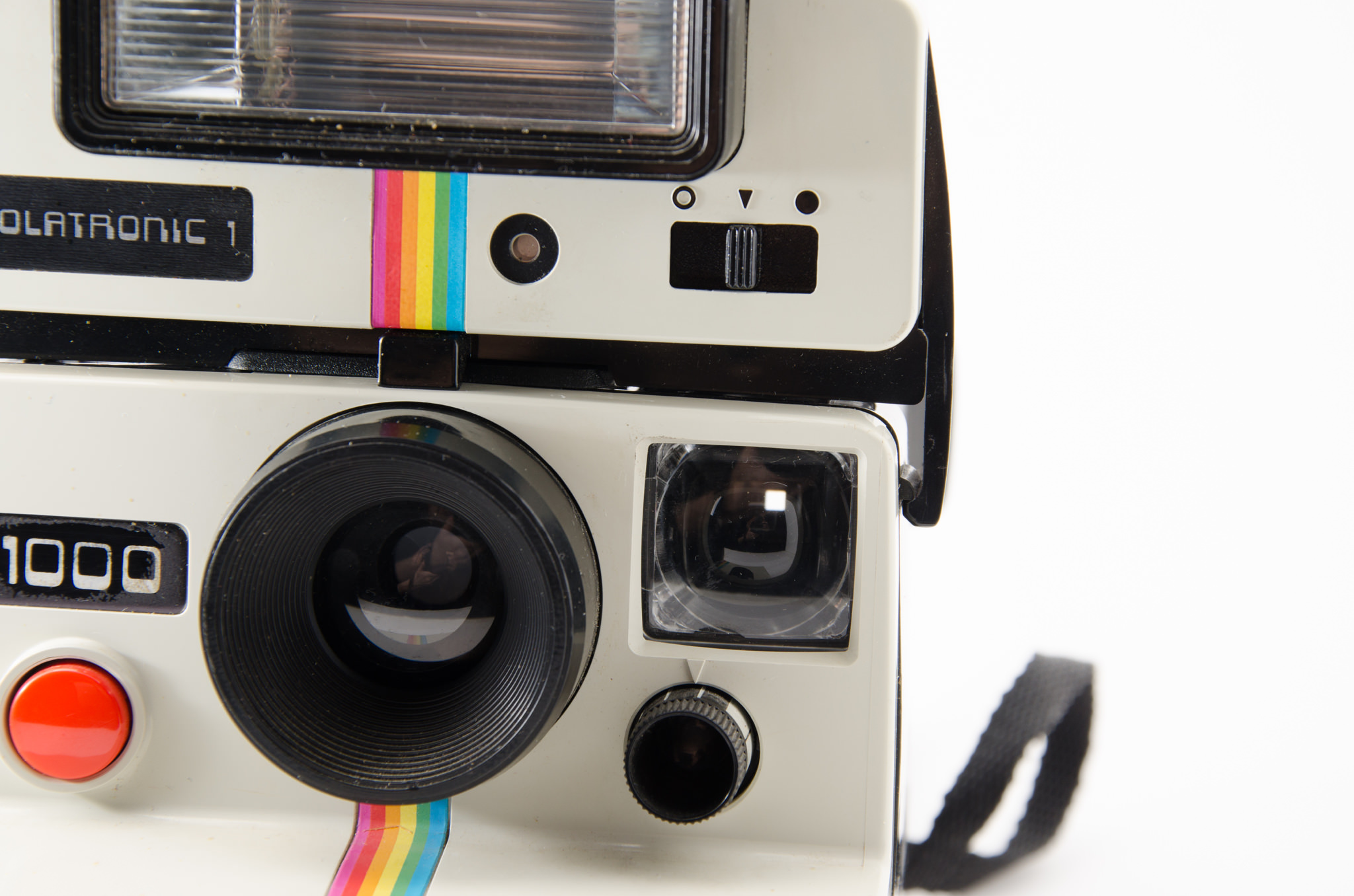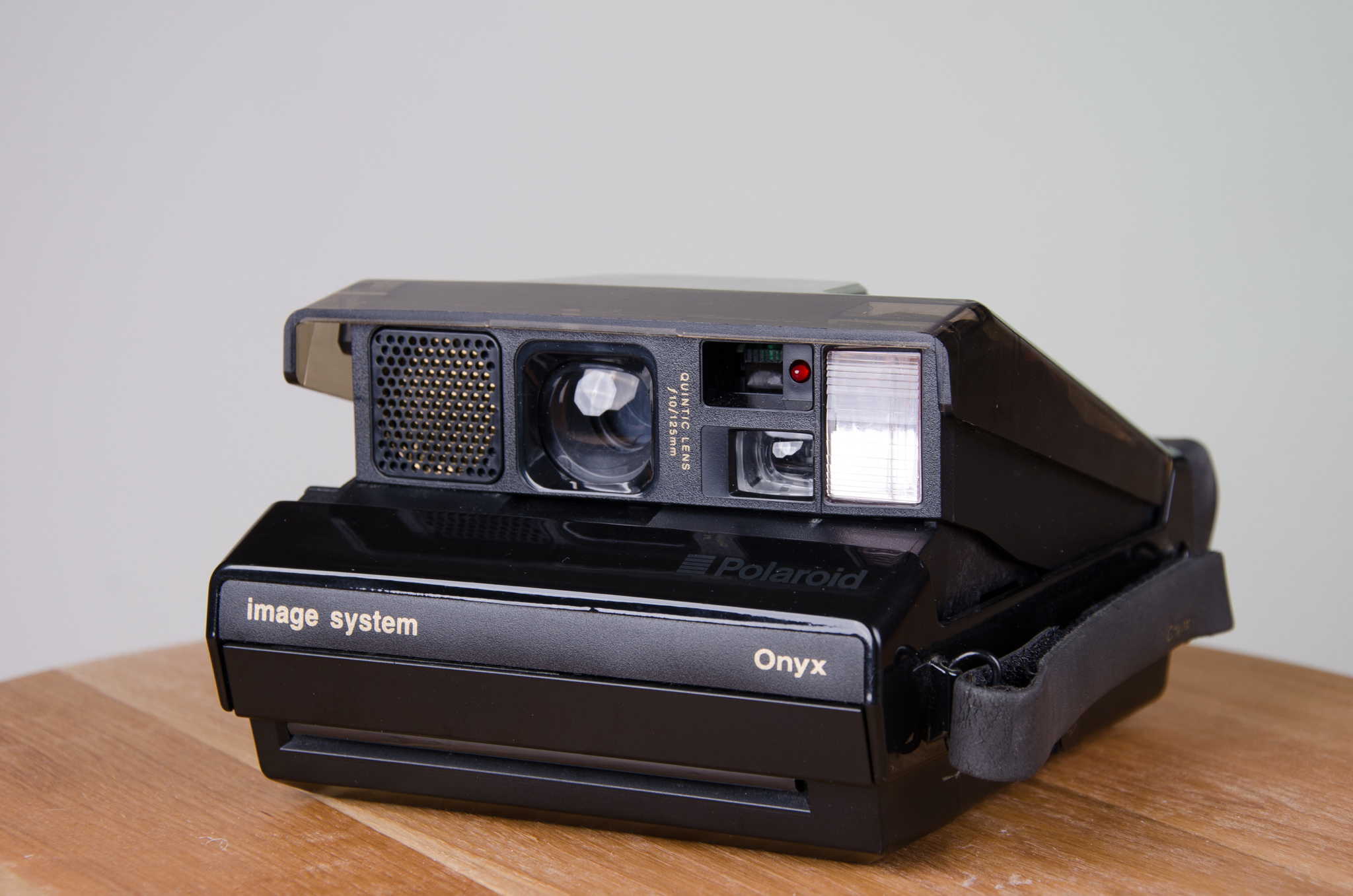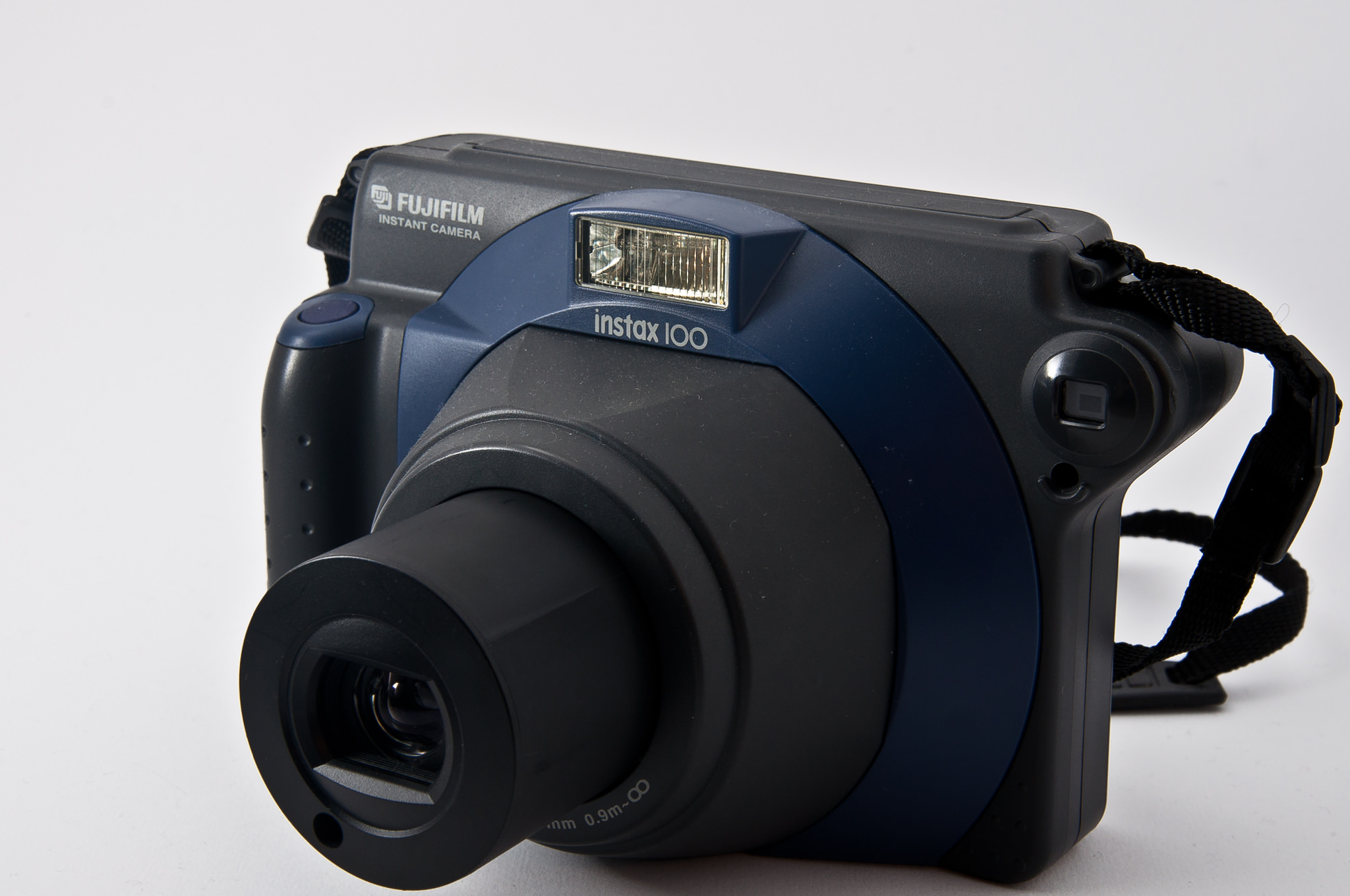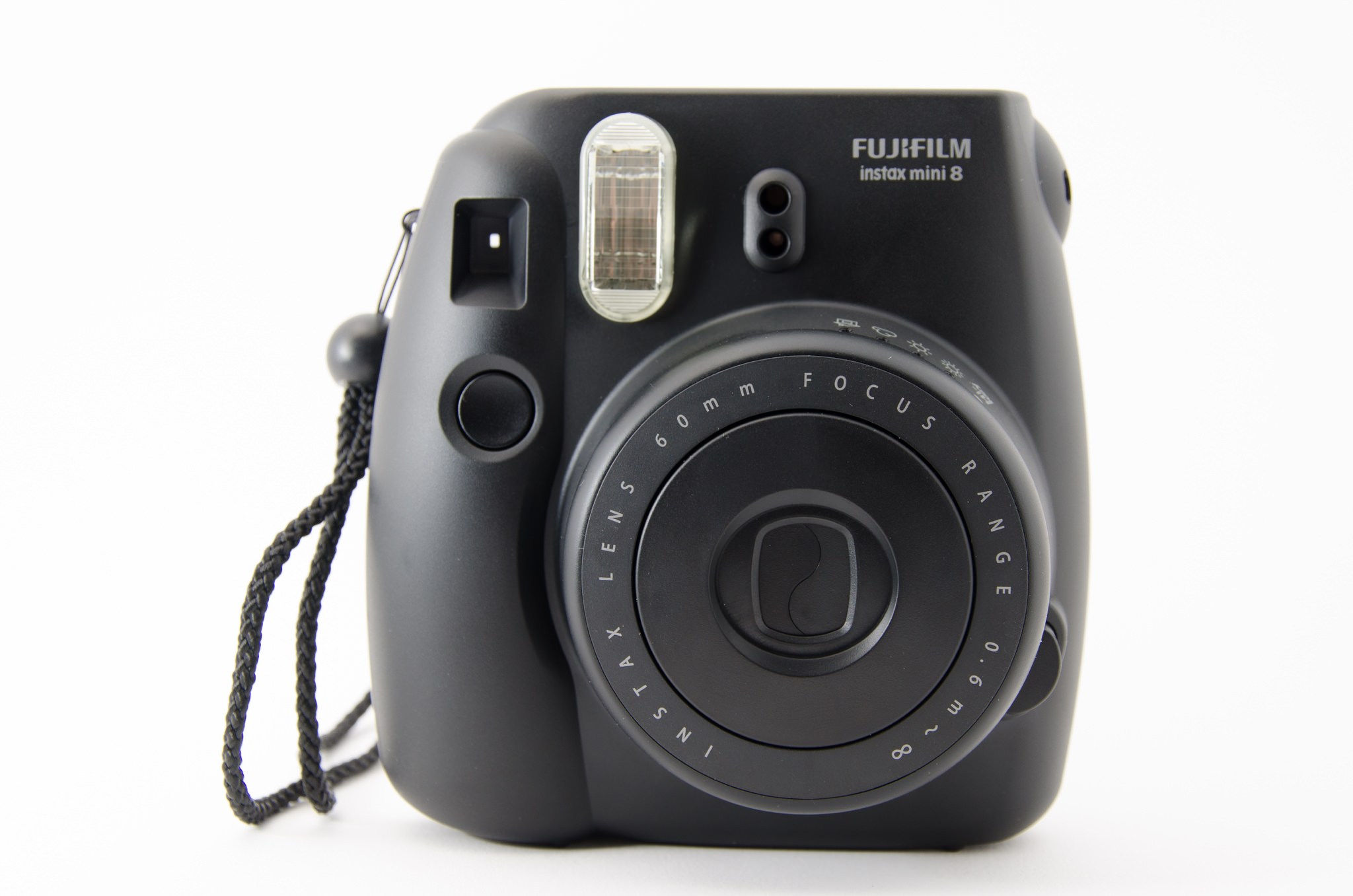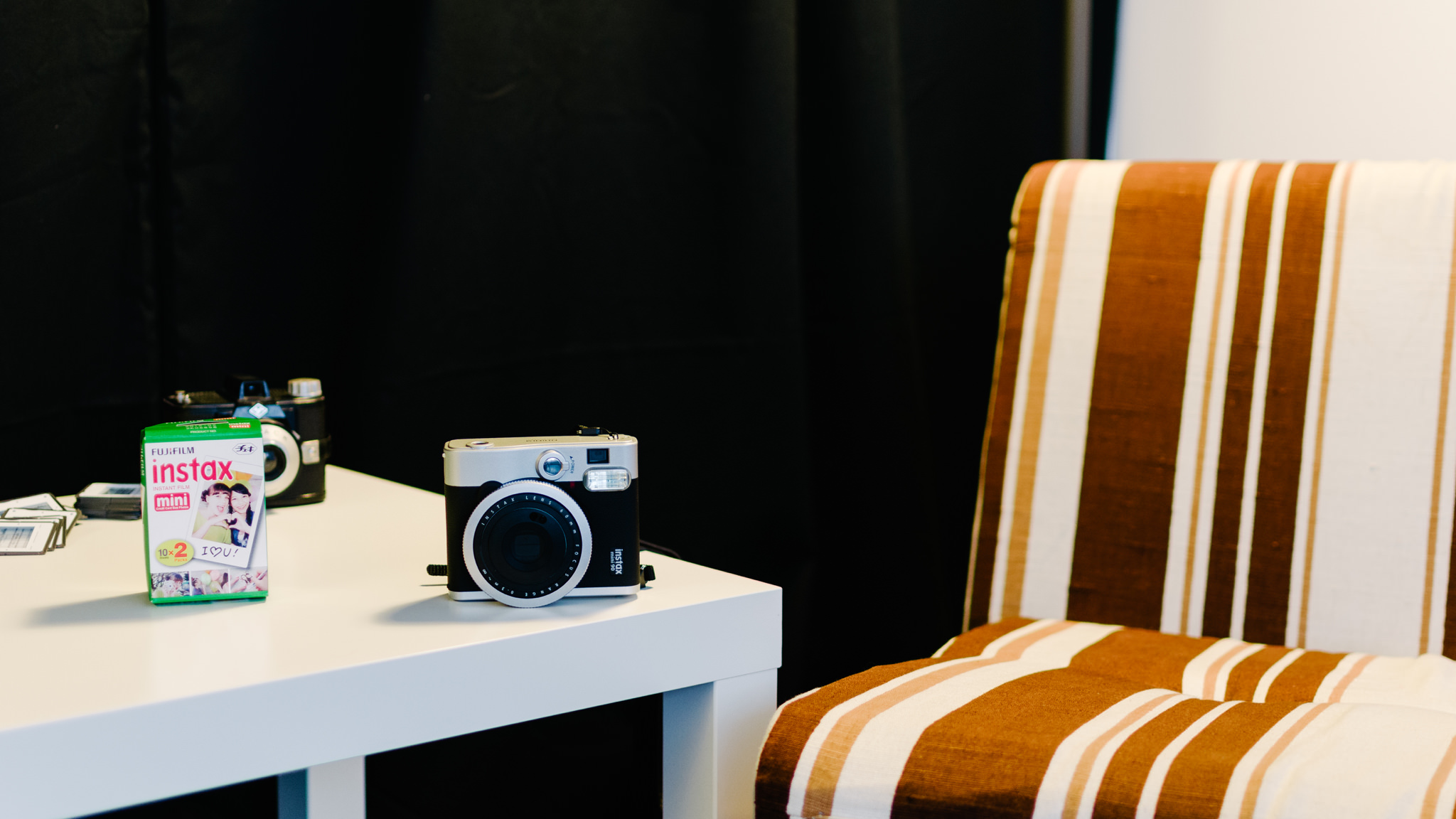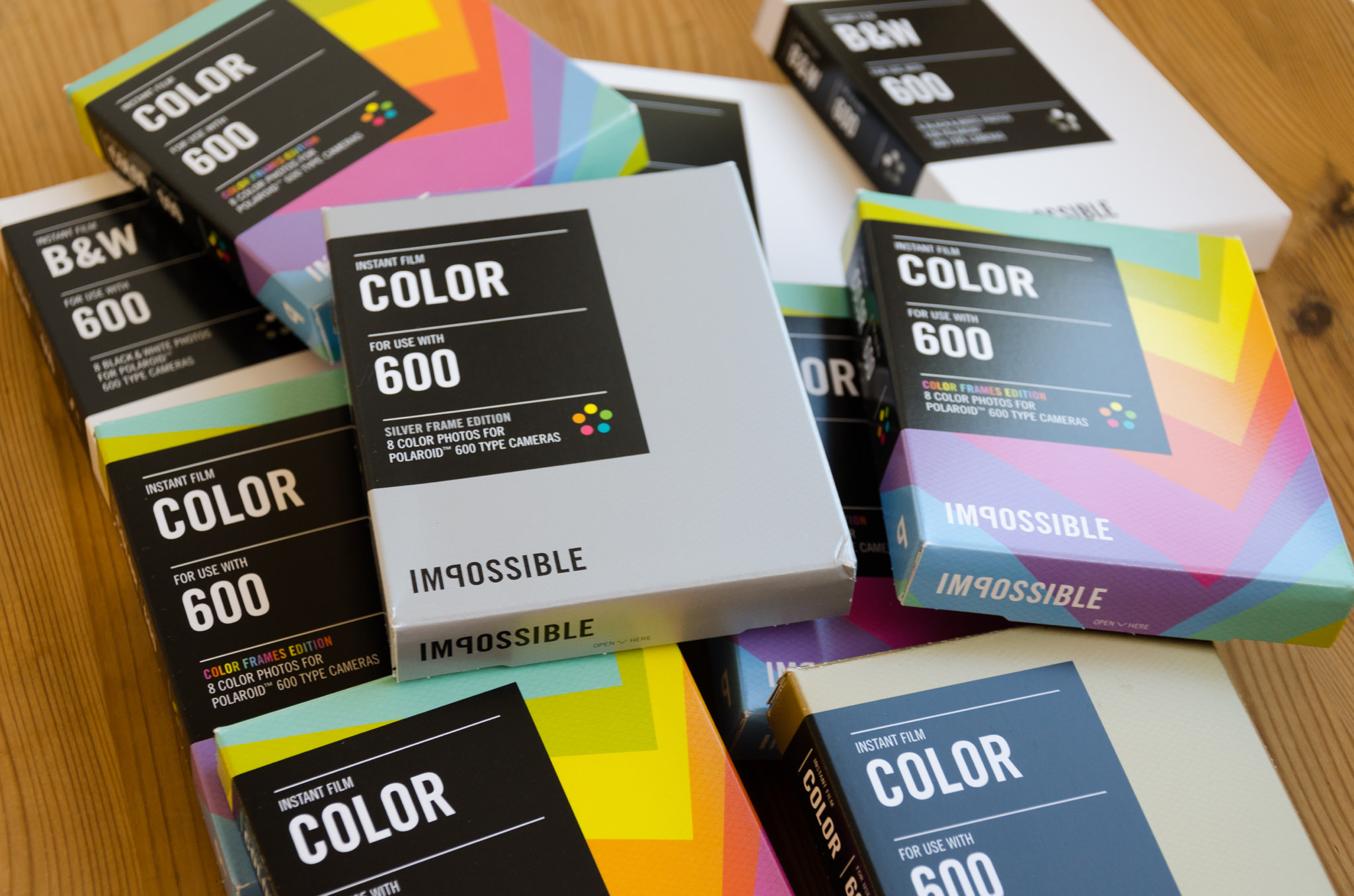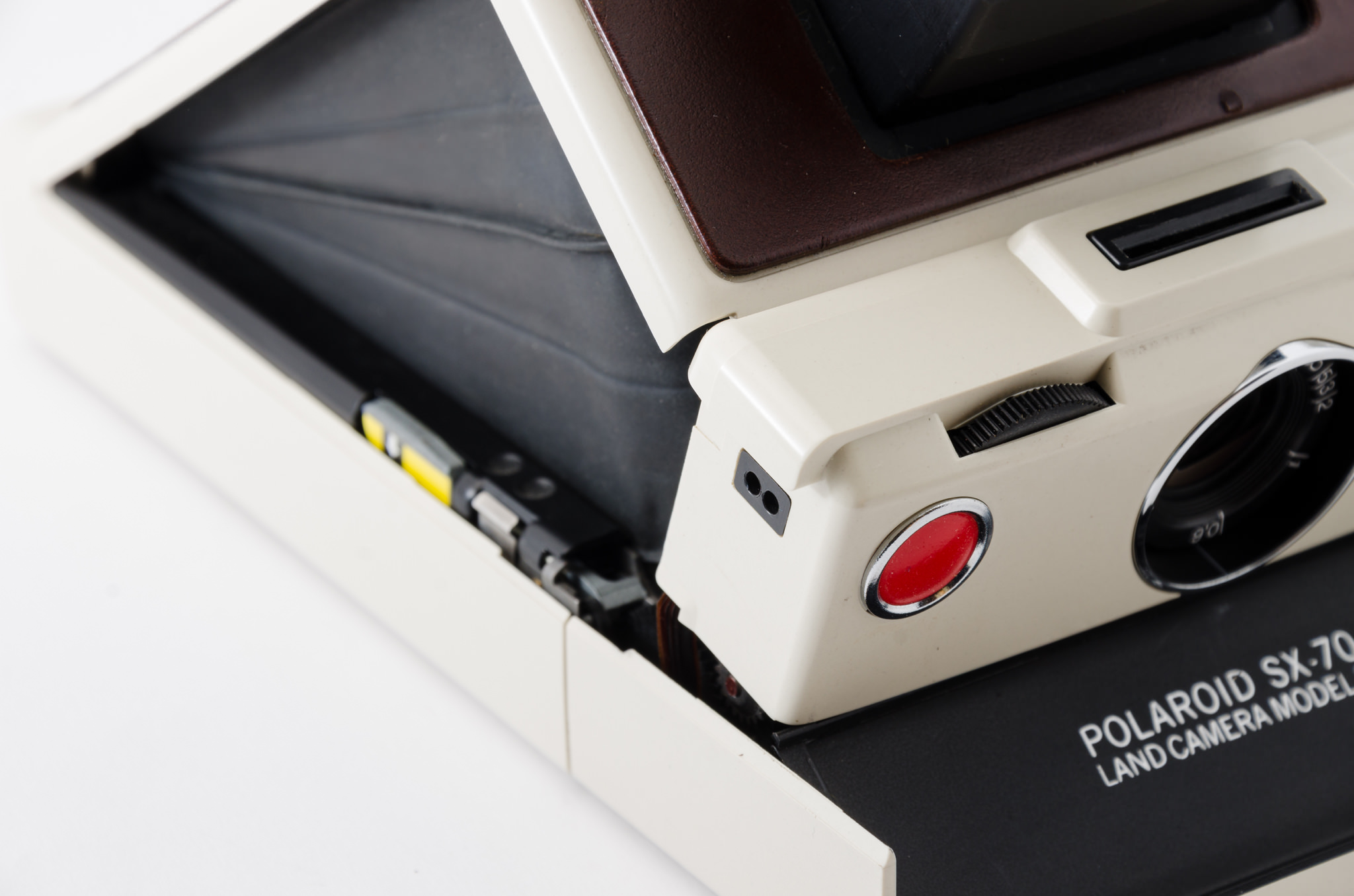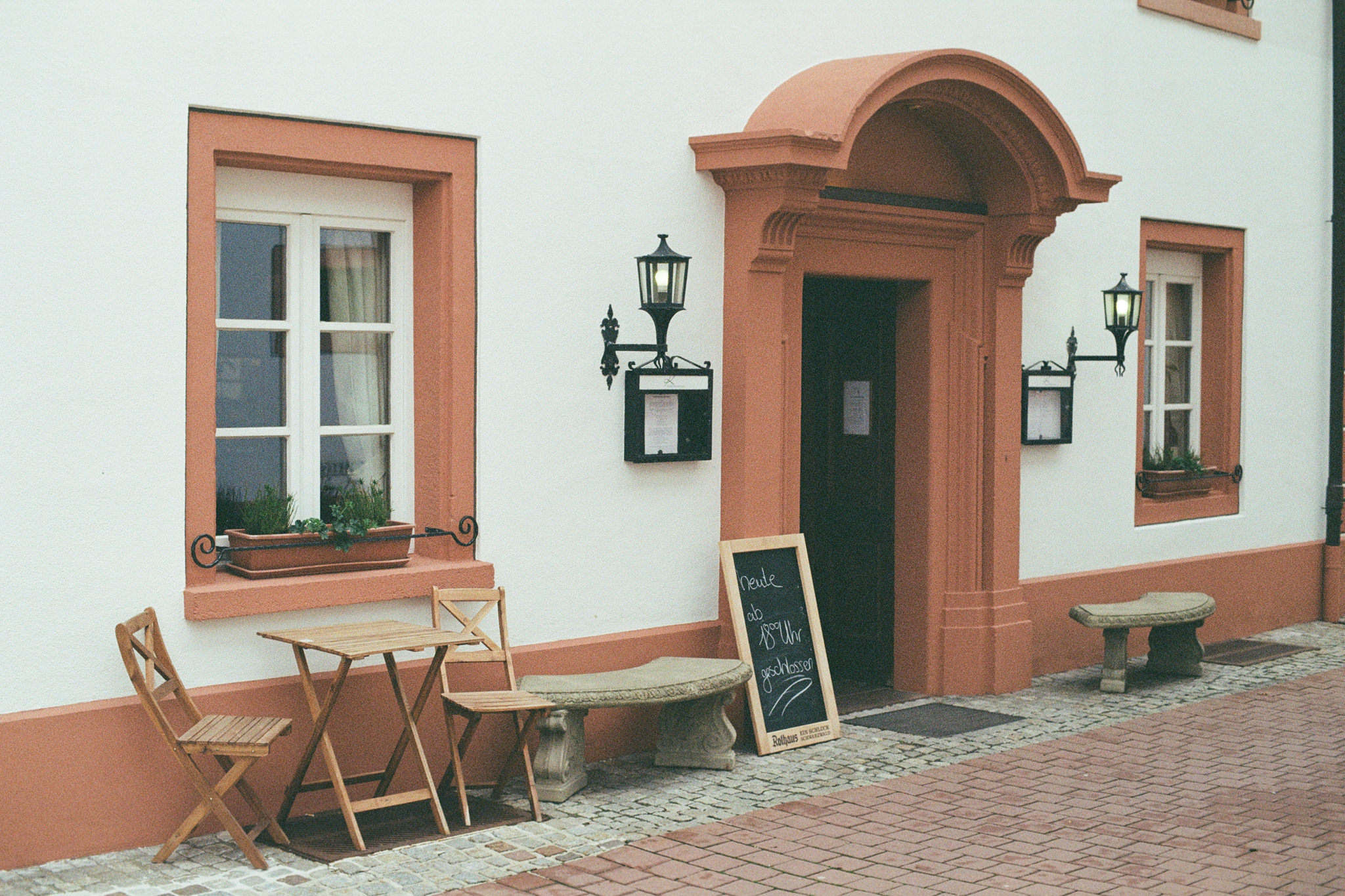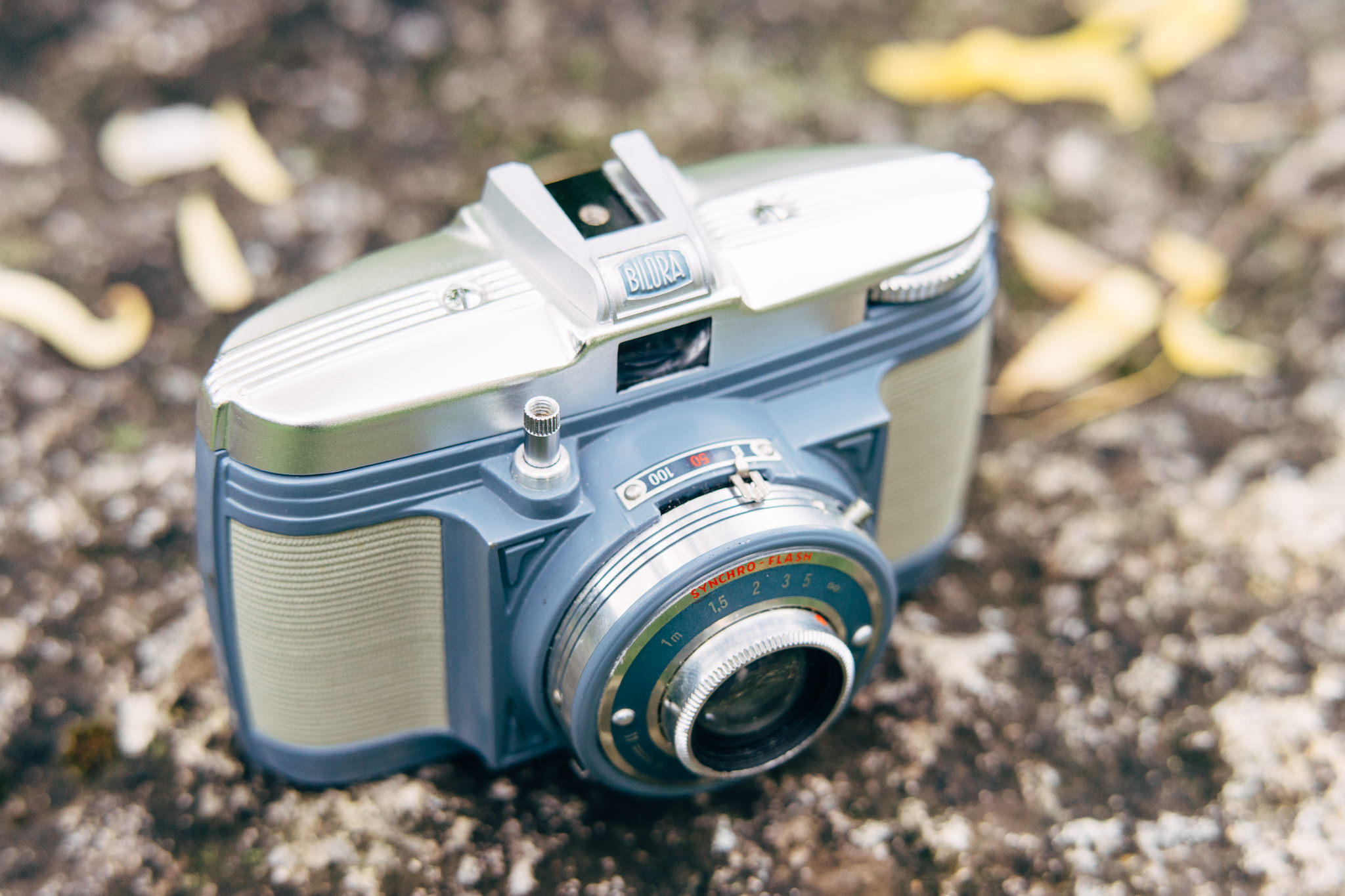I am often asked for the best instant camera for beginners. The answer is not always easy. Therefore this article gives a small overview of possible cameras and the different film formats.
Table of Contents
- What is an instant camera?
- Polaroid 600 Format
- Polaroid 636
- Other models
- Polaroid 600
- Other models
- Polaroid SX-70 Format
- Polaroid SX-70
- Similar models
- Polaroid 1000
- Other models
- Polaroid Spectra Format
- Polaroid Image
- Additional cameras for the Spectra format
- Fujifilm Instax Wide Format
- Fujifilm Instax Wide 300
- Alternatives for the Instax Wide Format
- Lomo’Instant Wide
- Fujifilm Instax Mini Format
- Fujifilm Instax Mini 8
- Fujifilm Instax Mini 9
- Fujifilm Instax Mini 70
- Fujifilm Instax Mini Hello Kitty
- Fujifilm Instax Mini 90
- Lomo’Instant
- Lomo’Instant Automat
- Leica Instant
- Explanation of terms & remarks
- Multiple exposures
- Film speed
- Camera strap
- Zoom
- Costs
- My recommendation
What is an instant camera?
An instant picture camera is a camera where you get the picture in paper form right after taking the picture. Each picture is unique, as the camera cannot save the pictures.
For taking pictures, so-called instant films are needed. These are in a holder (film cassette) that is put into the camera. The films are light sensitive and the chemistry for developing the pictures is already in the film. Immediately after pressing the shutter release, the camera ejects the image. After some time, depending on the format, the image appears as if from nowhere. Around the taken picture there is a mostly white frame, which is mostly writable.
In a cassette there are usually eight or ten pictures. After each number, a new film must be put into the camera. The pictures cannot be deleted. The magic of an instant picture is not comparable to a selfie on a smartphone.
For all cameras there are still or again films to buy. Also most of the instant cameras in the list are still in production or can be easily bought used.
In general, taking pictures with an instant camera is very easy and you rarely need the manual. Often there are only few or no setting options and the camera takes over the exposure settings and the focus of the lens. A flash is integrated in most cameras and is triggered when needed.
The few settings make instant cameras very accessible, for example at parties, wedding celebrations and the like, but can also be a drawback. Some models offer more possibilities to influence the image.
Most instant cameras are made of plastic and come with a simple viewfinder to see through. An exact selection of the detail, as for example with a reflex camera, is therefore only possible to a limited extent.
Polaroid 600 Format
The form factor of the 600 format is probably a synonym for instant images. Square image and white frame.
Polaroid stopped production for this film format, but there are now films available again for the old cameras. The company “The Impossible Project” offers a variety of films and sells it under the original brand. There is one film for black and white pictures and one for colour pictures. There are also editions of both with differently designed frames around the pictures.
The cameras for this format are no longer manufactured, but are still easy to get used. The single models differ mostly only in the appearance and are identical in the functional range.
Polaroid 636
The Polaroid 636 is here exemplary for the models from the 90s.
The camera is very easy to use. You don’t have to press the shutter release button on the side of the instant camera after inserting the film. The camera takes care of setting the exposure time and aperture. Also, one does not have to take care about the power supply, the battery for the camera and the built-in flash is installed in the film cassette.
Some models come with a sliding lens for close-ups with a distance of 60 cm to the subject. Otherwise the close-up limit is 1.2 meters.
The film counter on the back indicates the remaining frames. Since it is designed for ten frames, it is important to note that the Polaroid Originals films are over sooner. There are only eight frames in an Polaroid Originals film cassette.
Other models
Polaroid Barbie, Polaroid Easy, Polaroid Family, Polaroid 636 Close-Up…
One of the most unusual instant cameras is the Polaroid 636 Talking Camera, which makes noise when taking pictures.
Polaroid 600
The Polaroid 600 came later and had an even more generic name. It is here also exemplary for the cameras with rounded corners.
The range of functions actually remained the same. Automatic exposure, fixed focus and a built-in flash. The operation is also very simple and the instant cameras do not have much in the way of image quality.
Other models
Polaroid 600 AF, Polaroid P, Polaroid Extreme, Polaroid SpiceCam…
Polaroid SX-70 Format
The SX-70 was developed before the 600 format from Polaroid. It has the same size and differs only in the film speed. The sensitivity is lower on SX-70 films.
Polaroid SX-70
The Polaroid SX-70 is one of the “most complicated” but also coolest cameras in the list. It was introduced in the 70’s and is a real piece of high tech. The SX-70 is an SLR, so you look through the lenses and not through a separate “window”, and after taking a picture, it can be folded flat.
The subject is manually focused with a small wheel. Through the viewfinder you can see when the focus is set. Because of the large aperture and the film format there is a nice depth of field. The camera sets the exposure automatically.
A flash is not built into the Polaroid SX-70. But there is a connection for disposable flashes. These disposable flashes are no longer manufactured, but the company Mint offers the “Flash Bar”, a suitable flash unit for the camera. At the bottom side there is a thread for a tripod.
The Polaroid SX-70 is a very high-quality camera and is suitable for advanced users. It is not necessarily intended for quick snapshots.
Similar models
Beside the original SX-70 there are several other models. Some of the later models have only a simple viewfinder and are not SLR cameras anymore.
Polaroid 1000
In addition to the foldable SX-70 cameras, box cameras are also available for this film format. These, for which the Polaroid 1000 is representative, are made of plastic, cannot be folded and have a smaller range of functions.
The focus of the Polaroid 1000 is fixed. The exposure is set automatically. The user does not have to press the shutter release button more than that. A foolproof camera.
Like the Polaroid SX-70, the Polaroid 1000 does not have a built-in flash, only a connection for an external flash. Personally, I would advise against box cameras and recommend the SX-70 or the 600 cameras with built-in flash.
Other models
Polaroid OneStep, Polaroid 2000, Polaroid 3000, Polaroid OneStep, Revue 1001, Polaroid The Button… The models usually do not differ much from each other.
Polaroid Spectra Format
This film format had different names. In North America “Spectra” and on the international market simply “Image”. It was introduced in the 80’s and is very similar to the SX-70 and 600 format. The crucial difference is the size of the images. Films for the old Polaroid Spectra/Image cameras are available from Polaroid Originals.
Polaroid Image
The Polaroid Image, on the North American market “Polaroid Spectra”, was one of the first cameras for the format. The camera is well made and is very easy to use. It comes with a built-in flash and autofocus. The autofocus is ultrasonic (Polaroid Sonar AF System). The advantage is that the camera is able to focus independently of the available light, the disadvantage is that there are problems when shooting through a window. In this case the autofocus, as well as the flash, can be switched off. The shortest distance to the subject is 60 cm.
The Polaroid Image instant camera has a self-timer.
Additional cameras for the Spectra format
The Polaroid Image Elite Pro and the Polaroid ProCam are alternatives to the classic Polaroid Image. The two instant cameras come with more functions and are still easy to use.
The Polaroid Image 2 on the other hand offers fewer functions. For example, there is no possibility to turn off the flash and the autofocus.
Fujifilm Instax Wide Format
The Fujifilm brand is rarely associated with instant cameras, especially earlier due to the dominance of Polaroid. However, the Japanese company has some very interesting instant cameras in its range and now plays a very important role. There are two film formats. An Instax Wide image is about twice as large as an image taken with an Instax Mini camera. Especially for group shots or landscape pictures the wide format has its advantages. The Instax Wide format can be an alternative to the Polaroid Spectra format.
In the case of Instax films, the batteries are not in the film cassette, but in the camera separately.
Fujifilm Instax Wide 300
The Fujifilm Instax Wide 300 was introduced in 2014 and is still in production. The camera is easy to use and with the flash you can be adjusted to most lighting conditions.
It is one of the largest and heaviest cameras in this list. Without batteries and films it weighs 612 grams. If the camera is too heavy, it can be mounted on a tripod.
The Instax Wide 300 focuses in two stages (near and far). The camera automatically adjusts the exposure settings. The built-in flash provides enough light.
A lens attachment is available for close-ups. With it you can get up to 40 cm close to your subject. The Instax Wide 300 is powered by four AA batteries.
Alternatives for the Instax Wide Format
The Fujifilm Instax 100 and Instax Wide 210 offer a similar range of functions.
Lomo’Instant Wide
The Lomo’Instant Wide offers the most flexibility and creativity in Instax Wide format.
The camera automatically adjusts the exposure. Additionally there is a fixed shutter speed and a bulb mode. In bulb mode the shutter remains open as long as the shutter release button is pressed. This makes it easy to make long exposures.
The Lomo’Instant Wide has a built-in flash that can also be switched off and can also be used with external flashes. The colour filters for the flash provide for more colourful pictures. And there is even more creativity with the ultra wide angle lens and the macro lens. With the latter, close-ups up to 10 cm distance are possible.
Multiple exposures are possible with the Lomo’Instant Wide.
A remote shutter release is hidden in the lens cap. With it and the tripod thread group pictures with friends are possible without problems.
Power is supplied by four AA batteries.
Fujifilm Instax Mini Format
The Instax Mini format is Fuji’s second format and one of the most popular overall. The images have the size of a business card. For this reason, the cameras are also more compact. The upright format is well suited for portraits and selfies.
The pictures are surrounded by a white frame that can be pasted and labeled as desired. There are also editions where the frame is printed with different motifs.
There are black and white and colour films for the Instax Mini format. One film cassette contains 10 pictures.
Fujifilm Instax Mini 8
The Fujifilm Instax Mini 8 is a good entry-level camera for the Instax Mini format and one of the most affordable models. The handling is very simple. You select the desired mode by turning the lens. Besides the modes for different lighting conditions, represented by pictograms, there is also a high-key mode.
The Instax Mini 8 is very compact for an instant camera and weighs around 300 grams.
The built-in flash has a range of 0.6 m to 2.7 m. The Instax Mini 8 is available in yellow, blue, pink, white, black, purple and red. Power is supplied by two AA batteries.
Fujifilm Instax Mini 9
The Fujifilm Instax Mini 9 is the successor to the Instax Mini 8, and is almost identical in design and features. The Instax Mini 9 has a small mirror next to the lens for selfies and comes with a close-up lens for close-ups. With this you can get up to 0.3 cm close to your subject.
The Instax Mini 9 is available in light blue, blue, pink, white, and green. The power supply is provided by two AA batteries.
Fujifilm Instax Mini 70
The Fujifilm Instax Mini 70 is one of the newest cameras for the small film format. It offers some more features than the Instax Mini 8 and looks much more elegant. It is available in white, money, blue, red, black and gold.
In addition to the normal mode, there is, as with the Instax Mini 8, a mode for high-key shooting and additionally a macro mode.
The built-in flash provides enough light and is so intelligent that it also takes ambient light into account.
For selfies, the instant camera has a small mirror on the front where you can see yourself. In the special selfie mode, the camera adjusts exposure time and distance accordingly, so every self-portrait succeeds.
The Fujifilm Instax Mini 70 comes with a self-timer and a thread for a tripod. The power source is provided by two CR2 batteries. According to Fujfilm the batteries are sufficient for 300 pictures. Without batteries and films it weighs 280 grams.
Fujifilm Instax Mini Hello Kitty
The Instax Mini Hello Kitty is probably one of the most unusual instant cameras in terms of appearance and is a must for all fans of the Japanese cat. The camera is pink and white and even has a small bow.
The Fujifilm Instax Mini Hello Kitty comes with an automatic mode and a built-in flash.
The power is supplied by two AA batteries. The camera measures 169 mm x 145 mm x 69 mm and weighs 395 grams without film and batteries.
Fujifilm Instax Mini 90
The Fujifilm Instax Mini 90 is at the top end of the Instax Mini range and offers most of the features of Fuji cameras.
The Instax Mini 90 comes with different modes for different shooting situations. In addition to party, landscape and children’s mode, there is also a mode for long exposures, double exposures and macro shooting. There are also different modes for the built-in flash, such as “red eye” reduction or brightening.
There is a shutter release for portrait and landscape shooting. Selfies are a cinch with the small mirror on the front.
The self-timer can take one or two pictures if desired. The display shows the remaining pictures and the settings. A thread for a tripod is not missing either.
The design of the Instax Mini 90 Neo Classic is based on the digital cameras from Fuji.
Power is supplied by a rechargeable battery. One charge is sufficient for about 100 pictures. Without film and battery, the camera weighs just under 300 grams.
Lomo’Instant
The Lomo’Instant is a camera from Lomography and was funded through crowdfunding. In the meantime you can buy it regularly.
The Lomo’Instant offers a wide range of settings, but is also a bit more complicated to use. There are two exposure times, 1/125 second and bulb, with the shutter remaining open as long as the release button is pressed. The built-in flash can be switched at will and multiple exposures are also easily possible.
For even more creativity and experimentation there are different lenses available for the Lomo’Instant. There is the built-in wide angle lens for shots up to 40 cm, a fisheye lens with the typical circular effect and one lens each for portrait and macro shots. With the macro lens you can take pictures at a distance of only 10 to 15 cm from the subject. There are also colour filters for the flash.
On the front side there is a mirror for selfies. There is a connection for a cable release and a thread for a tripod. The instant camera is powered by four AAA batteries.
There is a variety of different editions of the Lomo’Instant. These always bear the name of a city and differ from each other only in appearance.
Lomo’Instant Automat
The Lomo’Instant Automat is the second instant camera for Lomography’s Instax Mini format.
The camera has an auto mode, but also offers the possibility of manual long exposures up to 30 seconds. In addition to the fixed lens, there are additional attachments for wide-angle, fisheye and close-up photography.
As with the Lomo’Instant Wide, the lens cover is also a radio shutter release. For multiple exposures there is an additional splitter and for colourful flash pictures there are some colour filters.
Of course a tripod thread and a built-in flash are not missing. Two CR2 batteries are used as power source. The Lomo’Instant Automat is available in different designs.
Leica Instant
The Leica Sofort is the first instant camera from the legendary camera manufacturer from Wetzlar and is designed for the Instax Mini format.
The camera has different modes. There is an auto mode, one for people & party and one for action & sport. There is also a mode for selfies, long time shots and double exposures. A macro mode (0.3 to 0.6 meters) and a self-timer are also included with the Leica Instax. The self-timer has a lead time of 2 or 10 seconds. The built-in flash can be switched off if desired.
Power is supplied by a rechargeable battery included. This is designed to supply the camera with power for up to 100 images. The Leica Instant weighs around 300 grams without battery and films.
The Leica Sofort is available in white, mint and orange.
Explanation of terms & remarks
Multiple exposures
With multiple exposure, multiple images are taken in succession on the same image. This can produce great photos. Multiple exposures are only possible with cameras that have an appropriate mode, as they usually eject the image directly after the first shot.
Film speed
In short, film speed is the ISO value for analog cameras. It is fixed to the film and cannot be changed per frame as it is the case with a digital camera. With instant cameras, the film speed does not play a major role, as the camera takes over the settings anyway and there is no choice of sensitivities.
Camera strap
A camera strap or hand loop is included with most cameras or can be attached.
Zoom
All instant cameras in the list come with a fixed focal length. Therefore you have to zoom by getting closer to your subject.
Costs
Instant photography is expensive. Unlike with digital photography, acquisition is not the main cost factor, but the running costs. Every picture costs money. Depending on the film format, it is one to two euros per photo.
Due to the costs, one automatically does not take as many pictures as one would perhaps take with a digital camera. Instant picture cameras are not the snapshots for the everyday life but cameras for special occasions as birthday party, the wedding, for special snapshots on holiday and so on. In any case, every picture is unique and therefore something special.
My recommendation
I always have trouble with a clear recommendation. Each of the mentioned instant cameras has its advantages, but also disadvantages. I like to advise beginners to use Instax cameras. They are easy to use, the films are mature and easy to get and relatively inexpensive.
If you want a classic Polaroid camera, I would recommend the 600 format. For this film format you can still find used cameras. The range of functions is limited to the most important things and so they are very suitable for beginners.
The Leica Instant, Fujifilm Instax Mini 90 and Lomo’Instant cameras probably offer the most functions and the greatest creative freedom.
